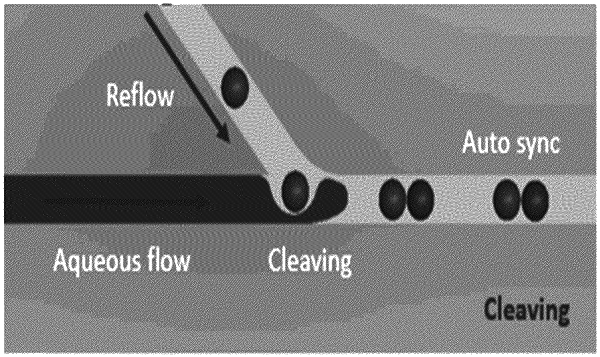| CPC B01L 3/502784 (2013.01) [B01L 2200/027 (2013.01); B01L 2200/0647 (2013.01); B01L 2200/12 (2013.01); B01L 2200/16 (2013.01); B01L 2400/086 (2013.01)] | 20 Claims |

|
16. A method for forming a merged droplet for testing a fluid sample, comprising:
passing a controlled flow of a fluid sample through a first microfluidic channel in a droplet cleaving unit;
passing a first fluid containing a first set of multi-phase emulsion droplets through a second microfluidic channel in the droplet cleaving unit;
cleaving the fluid sample in the first microfluidic channel into a second set of droplets by flow of the first set of multi-phase emulsion droplets from the second microfluidic channel, the two microfluidic channels being joined at an acute angle;
placing the first set of multi-phase emulsion droplets in close proximity to the second set of droplets generated by cleaving to form paired droplets;
automatically synchronizing the paired droplets at a pairing ratio between the first set of droplets and second set of droplets; and
merging the paired droplets to form a merged droplet.
|